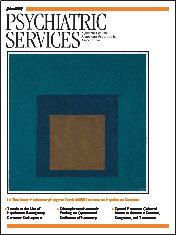"Are You There Alone?": The Unspeakable Crime of Andrea Yates
It was hard to follow the case of Andrea Yates [who is serving a life sentence for drowning her five children in a bathtub] in the news without getting angry—angry with Yates's husband, angry with her doctors, and especially angry with Texas law. How could the severity of this woman's illness go unrecognized for so long? Was it fair to say she knew right from wrong when she claimed she committed the crime because Satan was inside her and she needed to be executed in order to kill him?
Suzanne O'Malley has written a book about this tragedy by using her skills as a journalist. She has interviewed everyone she could find who had any relationship to the case, including Yates's family members, friends, attorneys, and current and previous mental health providers. O'Malley has also had an ongoing mail correspondence with Yates. The result is a detailed chronologic account of what happened, an attempt to balance many points of view. Andrea Yates apparently suffered from unrecognized bipolar illness, although she had been treated intermittently for diagnoses of depression, postpartum depression, and schizophrenia. There were many missed opportunities to help her. The real villains in this story appear to be ignorance and poor communication. Even Rusty Yates, the much-maligned husband, is portrayed in the book as a three-dimensional character, and background information is provided to show how he became the kind of person he is. O'Malley also tracked down and visited the psychiatrist who last treated Yates before the tragedy. It was a bit disconcerting to read that O'Malley pretended to be a patient in order to meet with this psychiatrist; however, her conclusion was that he was a seemingly decent man who appeared to know something about medications and prescribed conservatively.
The slow and drawn-out nature of the legal process also played a significant role in this seeming miscarriage of justice. Because Andrea Yates was being treated while in prison, her mental status improved and her recall of events changed. Her descriptions of what she was thinking at the time of the crime became much more bland. Her own account of her role shifted from having Satan inside her to just being a bad mother whose children were not growing up "righteous." To complicate the picture, the psychiatrist expert witnesses were brought in to see her only weeks to months after the crime, so their pictures of Yates were inevitably different even before interpretation.
This book also discusses the history of the insanity defense and provides some background information about mental illness, especially bipolar disorder and postpartum psychosis. Although the book contains several errors, such as describing the patient's "reduction of normal body movement" as an antipsychotic side effect called tardive dyskinesia, this did not detract too much from the whole. Overall, this is a very readable account of a very sad and painful story.
Dr. Kovasznay is clinical director in the Bureau of Forensic Services of the New York State Office of Mental Health in Albany.



